Archive for the ‘Meetings’ Category
Michael Foulkes — Saturn
Wednesday, April 4th, 2012
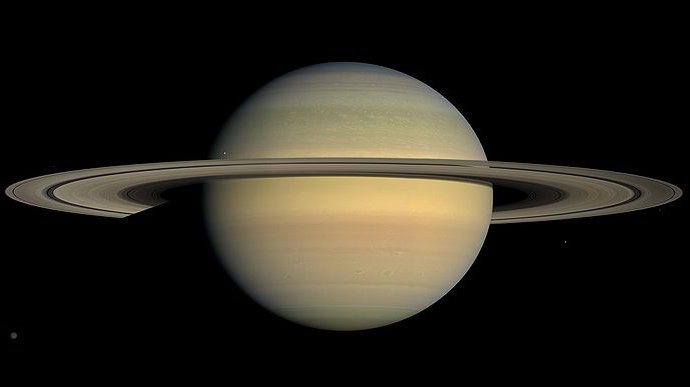
Wednesday 4th April
Being the head of the Saturn section at the British Astronomical Association, it seemed natural that Michael Foulkes should deliver April’s talk on the beautiful ringed planet. Saturn is probably the best loved object in the solar system, with its ring system visible in even the smallest telescope. Huygens was the first to observe this in the 17th century and a spacecraft that visited Saturn’s largest moon Titan was named after him. Michael described some of the features of Saturn’s orbit and the way the position of the Sun’s shadow changes according to its position relative to Earth. Because of the eccentricity of the plane of the rings relative to the planet’s orbit, ring system can become essentially invisible in certain years. Saturn is largely made up of hydrogen and has surface cloud features, but is not nearly as active as Jupiter. Nevertheless, storms have been detected on the planet even with small telescopes. The most famous was the Great White Spot, discovered by Will Hay the 1930s comedian. Michael finished his talk with a survey of the ring system and the main satellites, including Enceladus, which may have liquid water beneath its surface and therefore the potential for life. An informative talk which made us want to go out and see the planet for ourselves (it is currently in Virgo).
The Gordon Carter Memorial Lecture: Dr Andrew Norton – “Gamma Ray Bursts, a Cosmic Detective Story”
Monday, March 12th, 2012

Monday 12th March 2012
Dr Andrew Norton, Senior Lecturer in Astrophysics at the Open University, was invited to present the first Gordon Carter Memorial Lecture, which will become an annual event commemorating the founder of the Papworth Club who BeppoSAX satellite provided observations of GRBs that allowed spectral measurements to be made and therefore an estimate of the redshift of the object producing them. It turned out that these objects were about 6 billion light years away, meaning that they were exploding during the early history of the universe.
Some working model was required to account for the observations and the theory of how much energy could be produced by an object of given mass. Currently there may be two ways of producing the intense beam of radiation that emerges from these objects (as opposed to a uniform distribution). There may be pairs of neutron stars that orbit closer and closer to each other until they collide and explode, and there may be hypernovae that represent the end of early stars containing hydrogen and helium, but no other elements. Further observations are being made using the Swift space telescope that can detect the GRBs and then use other imagers to detect the optical and X-ray counterparts. Andrew commented that the spacecraft is designed to send a text message to the controlling astronomers on earth so they can alert the world’s observatories to these important events.
This was a worthy inaugural lecture that was much appreciated by the Papworth audience.
Katie Hassell – “Astrium”
Wednesday, February 1st, 2012
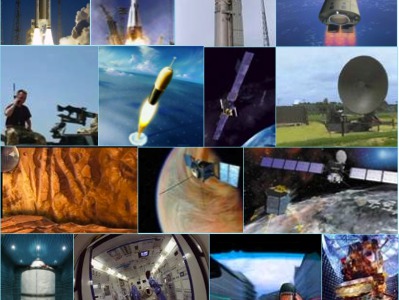
Wednesday 1st February 2012
This month’s talk was by Katie Hassell, a scientist from Astrium based in Stevenage. This branch of the multinational EADS group is familiar to us through a past visit by their head of publicity and a visit to the factory by some of our members a few years ago.
Katie described the company and showed an interesting picture of the Stevenage site in the 1950s which was basically a field, later developed into a site for producing spares for the Comet jet liner. Astrium has been involved in the construction of over 60 telecommunications satellites, plus a varied array of astronomical space probes, including Herschel, Planck and the Hubble telescope. A number of major projects are in the pipeline, including the Gaia interferometer, BepiColombo probe for Mercury, ExoMars and the space interferometer LISA.
There was an extensive Q&A session where Katie was asked about the practicalities of satellite construction and “qualification”. The latter is the process of ensuring that each component will operate to specification for a given period of time, maybe for decades. Given the harshness of interplanetary space, this is a big challenge. The extremes of temperature to which components are subjected, (according to whether they face towards or away from the sun), means that a lot of effort goes into devising thermal protection.
A very interesting evening, which makes you marvel at the skill (and expense) involved in making these devices work in space.
More information can be found at ESA’s website.
Prof. Alan Aylward – “Exoplanets and the EChO Mission”
Wednesday, January 4th, 2012
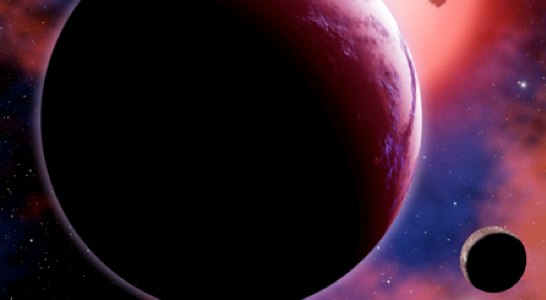
Wednesday 4th January 2012
We were fortunate in having Professor Alan Aylward come to start the New Year with a fascinating talk about exoplanets. This was a continuation of the talk he had given us a year previously, and with all the new data coming from observations from earth and space, there was plenty of exciting material to cover.
After reviewing the, by now, almost familiar methods of detecting exoplanets by observing their effects on star brightness and positions, he gave us an update on the highly productive Kepler spacecraft mission. This NASA instrument is a 0.95 meter telescope which simultaneously monitors the brightness of about 160,000 stars in a patch sky in Cygnus. Hundreds of possible exoplanets have been discovered, including one which orbits two stars (a circumbinary) and earth size planets.
Advances in ground-based observatories are now even making it possible to infer something of the composition of exoplanetary atmospheres. If transit observations are made in the infrared, it is possible to detect spectral signatures of water, methane, sodium etc as the planet transits its star. One “SuperEarth” (GJ 1214b) has been shown to be covered with water or water vapour (a super earth is about three times the size of earth and ten times heavier). These types of spectral observations coupled with new discoveries of earth-sized planets in potentially habitable zones open up more possibilities for detecting extraterrestrial life processes.
Alan and his group are involved in the design of the Exoplanet Characterisation Observatory (EChO) which is designed to make measurements of the composition of the atmospheres of a range of exoplanets in size from Jovian down to “SuperEarth”. We look forward to further news about exoplanets research and will undoubtedly be hosting future talks about this in Papworth.
Dr David Green – “Supernova Explosions Through History”
Wednesday, November 2nd, 2011
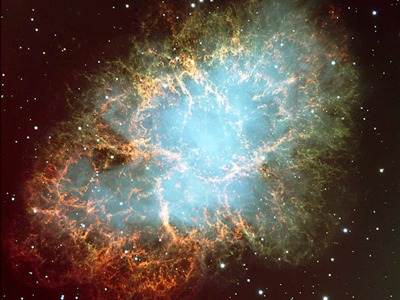
Wednesday 2nd November 2011
We were pleased to welcome Dr David Green, a senior lecturer at the Cavendish Laboratory in Cambridge. Dave gave us a very well-delivered combination of historical astronomy and modern research on supernova explosions. Specifically, he described the remnants of a number of supernova explosions that were recorded by earlier civilisations The most well known of these is the Crab nebula (M1) produced by a supernova which was observed by the Chinese in 1054 AD.
Many supernovae have been detected outside our own galaxy (a recent one being the object visible to amateurs in M101), but it has been estimated that one should occur every 50 years or so inside our own. Many of the latter will not necessarily be visible through optical telescopes because of obscuring dust clouds, but their remnants will be detectable with radio telescopes.
Dave described the way the ancient Chinese plotted the constellations, noting that they sometimes consisted of only a single star! Some of the supernovae must have been spectacular, since relating the ancient records to modern values of stellar magnitudes show that they could a magnitude of -6 or greater; this would cast a similar light to the moon.
Current research focuses on radio observations of the structure of the supernova remnants, particularly since some show unusual distributions of X-ray and other high energy radiation. The Crab nebula itself contains a curiously shaped band of radiation that was only observable with advanced instrumentation. These puzzling findings are clearly providing astronomers in this field with plenty of theories to generate and explore with further observations.
Dr Stephen Grafton – “The Planck Satellite”
Wednesday, October 5th, 2011

Wednesday 5th October 2011
Local Papworth resident Dr Stephen Gratton talked to us about the Planck Satellite which is designed to observe the cosmic microwave background. Stephen is a researcher at the Institute of Astronomy in Cambridge and has a particular interest in analysing the data coming from this space observatory.
The instrument was launched in 2009 by ESA and reached the L2 Lagrangian point in space where it sweeps large areas of the sky. The temperature of the microwave background is measured using an array of bolometers operating at distinct frequencies from 857 to 30 GHz. Stephen showed us pictures of the different sized tubes that form the arrays which detect radiation fed from the primary telescope mirror. This radiation represents a microwave background only a few degrees above absolute zero, so the telescope must be cooled with liquid helium and be kept pointing away from the sun.
The project has generated vast amounts of data which are being transformed into maps of the sky showing both the foreground radiation from our own galaxy, as well as showing the cosmic microwave background in unprecedented detail. Stephen described some of the preliminary data analysis, but warned us that these were early days, with much more to come. This talk was a nice combination of cosmology and space hardware, enough to satisfy enthusiasts of both aspects of modern astronomy.
Neil Parker – “The Isaac Newton Telescopes”
Wednesday, September 7th, 2011
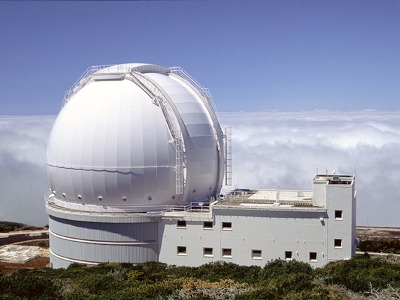
Wednesday 7th September 2011
Neil Parker from Green Witch gave us a talk about the Isaac Newton Group of Telescopes sited on La Palma in the Canary Islands. The ING consists of the 4.2-m William Herschel Telescope (WHT – pictured above), the 2.5 metre Isaac Newton Telescope (INT), and the 1.0 metre Jacobus Kapteyn Telescope (JKT), along with ten smaller instruments of various types. The INT has been in use since 1984 but was originally housed in the Royal Greenwich Observatory in Herstmonceux, Sussex (the author remembers seeing it there during a school trip in the late 1960s). Needless to say, the weather conditions in the UK made it impossible to use the telescope to its full potential.
The WHT is one of the largest general purpose telescopes in Europe and has been involved in the observations that indicate that the expansion of the universe is accelerating. This work led to a share of the 2011 Nobel prize in physics for Saul Perlmutter in UC Berkeley (announced some weeks after this talk). Neil showed us some enticing pictures of the landscape around La Palma as well as the telescopes, and commented on the engineering required to house and operate these huge instruments. A very enjoyable talk from someone with insider knowledge of this impressive collection of telescopes.
Dr Nick Achilleos – “The Cassini mission, investigating the magnetosphere of Saturn”
Wednesday, April 6th, 2011
 Nick is a scientist at the Atmospheric Physics Laboratory at University College London and kindly spared us the time to come up to talk to us about magnetic fields surrounding Saturn and Jupiter. These giant planets rotate very rapidly for their size and also contain a highly compressed form of hydrogen at their core which is essentially metallic. This means that a magnetic field is generated that extends away from the planet to form a magnetosphere. The intensity of this field is 550 and 18,000 times that of the earth for Saturn and Jupiter respectively, even though the field is still very weak (measured in microTeslas).
Nick is a scientist at the Atmospheric Physics Laboratory at University College London and kindly spared us the time to come up to talk to us about magnetic fields surrounding Saturn and Jupiter. These giant planets rotate very rapidly for their size and also contain a highly compressed form of hydrogen at their core which is essentially metallic. This means that a magnetic field is generated that extends away from the planet to form a magnetosphere. The intensity of this field is 550 and 18,000 times that of the earth for Saturn and Jupiter respectively, even though the field is still very weak (measured in microTeslas).
The work that Nick described was aimed at understanding how the magnetosphere is kept in place and what influences act upon it. In the case of the latter, certain satellites like Enceladus (Saturn) or Io (Jupiter) have physical characteristics that contribute charged particles to their planet’s magnetospheres. The forces that form the magnetosphere are a balance between the pressure of the solar wind that streams over all the planets and the magnetic field of the planet itself. These forces were explained (fairly gently) in mathematical terms, along with analyses of magnetometer data from the Cassini spacecraft orbiting Saturn. These measurements are freely available from NASA one year after original capture and are used by any group wishing to study planetary physics.
You can find more information about Nick’s work at his UCL homepage (http://www.homepages.ucl.ac.uk/~ucapnac) which includes a more detailed description of the magnetospheres of Saturn and Jupiter;
http://www.homepages.ucl.ac.uk/~ucapnac/lectures/psmp_lec4.pdf
Andrew Pontzen – “The Echo of Creation”
Wednesday, March 2nd, 2011
 Andrew Pontzen is a research fellow at the Kavli Institute for Cosmology, in the University of Cambridge.
Andrew Pontzen is a research fellow at the Kavli Institute for Cosmology, in the University of Cambridge.
His talk was an entertaining and informative survey of our current knowledge of the universe based on the theory and observations of scientists from Einstein onwards through the twentieth century. The central theme was the background radiation generated by the Big Bang at the beginning of the universe, which can be simply demonstrated as noise on an analogue TV set. Actually measuring the radiation and showing that that it is not uniform requires more than an old television; the first detection of the microwave background was made by Penzias and Wilson using a radio antenna, and later on a spacecraft showed that it was distributed in all directions. Only when the WMAP spacecraft was launched, was it possible to detect minute (parts in a thousand) differences over a background value near to absolute zero degrees Kelvin. These anisotropies showed that the early universe was not uniform and helps to explain how galaxies form out of primordial material.
A parallel theme of the talk concerned the fact that many of the pioneering scientists in this field were aging males with receding hairlines and glasses. This observation may turn out to provoke as much controversy as the theories that were being debated, such as the steady state universe versus the Big Bang.
As well as undertaking research in cosmology, Andrew is also involved in outreach activities and will be delivering the talk he gave to us in Papworth to the Cambridge Science Festival on 19th March at 4.30pm in the Babbage Lecture Theatre Cambridge. Those who missed it this time round will therefore have an opportunity to hear a talk with a bit more direct human interest than is often the case with scientific talks.
Mike Nichols – “Astro Navigation in Aviation”
Wednesday, February 2nd, 2011
 February’s meeting provided another twist on the vast subject of astronomy when Papworth resident, Mike Nichols, talked to us about astro navigation. Mike spent a career in aviation, flying with the RAF and civilian airlines, including a stint with private planes for VIPs. Mike started his career in the days before GPS was invented as a navigation aid.
February’s meeting provided another twist on the vast subject of astronomy when Papworth resident, Mike Nichols, talked to us about astro navigation. Mike spent a career in aviation, flying with the RAF and civilian airlines, including a stint with private planes for VIPs. Mike started his career in the days before GPS was invented as a navigation aid.
He began his talk with the story of a plane that got lost over the South Pacific when flying from the tiny island Pago Pago to Norfolk Island off the coast of Australia. The pilot was told to line his clenched fist against the Sun and estimate the number of degrees elevation. In this way, he could give the controllers an idea of his position, and eventually land safely, because of the simple principle behind astro navigation. This is understood by thinking of a light on top of a mast. The closer you are to the mast, the higher the light will appear and when further away, it will appear lower.
The system of astro navigation (initially just for ships of course) was invented in around 1875 by Marc St Hilaire, a French Admiral. Instead of lights on masts, celestial bodies are used instead; these include the Sun, Moon, Venus, Mars, Jupiter and Saturn, as well as 57 named stars. For navigation on aircraft, the naval sextant has been modified so it remains stable in flight and is heated to avoid being iced up when protruding from the fuselage in a perspex canopy. With a special marker to increase the precision of measuring the elevation of a body, this system proves to be remarkably accurate, perhaps to within a few miles. Mike showed some pictures of instruments used on the Hercules aircraft and the Apollo missions. The advantages of astro navigation over modern GPS are that it is simple, free and emits no signals from the aircraft. Of course it can only work if the sky is clear and the turbulence is light. Rather soberingly, the V bomber nuclear strike force was trained to use astro navigation in the event of approaching Russian targets so as to be “radio silent”. Luckily, they never had to try it out.